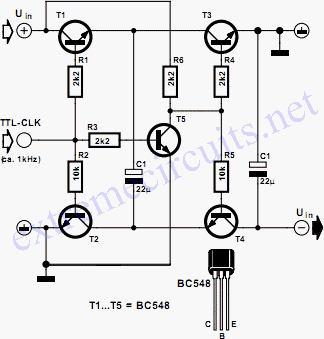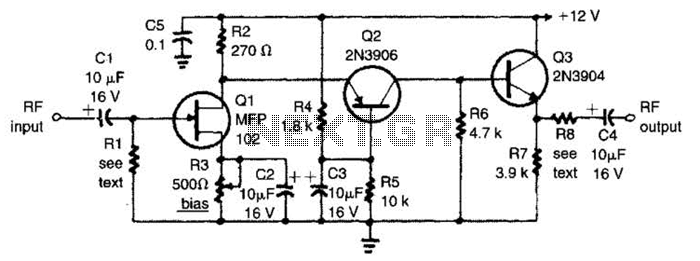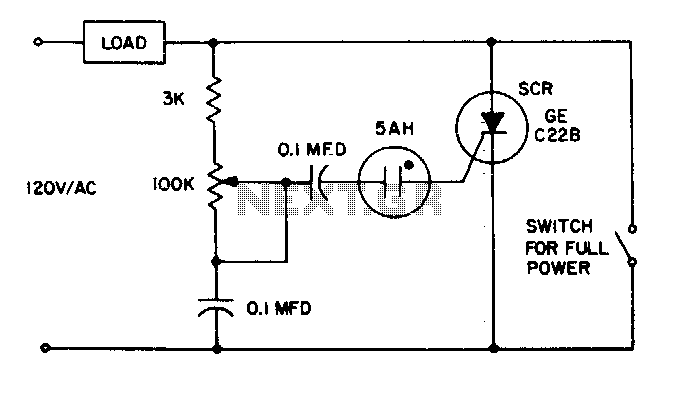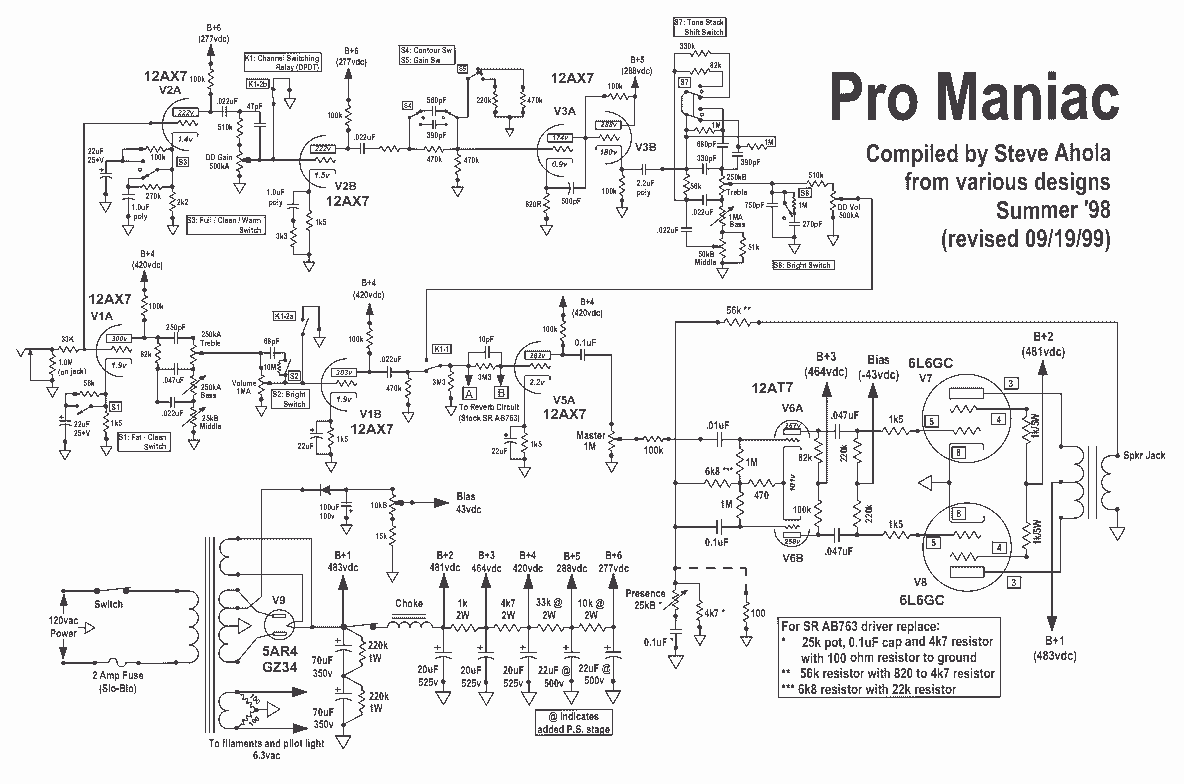
Voltage controlled variable gain amplifier II
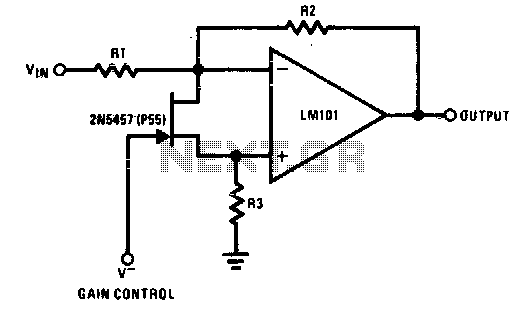
The 2N5457 functions as a voltage-variable resistor with a maximum RdS of 800 ohms. Given that the differential voltage on the LM101 is in the low millivolt range, the 2N5457 JFET exhibits linear resistance over several decades, offering excellent electronic gain control.
The 2N5457 is a junction field-effect transistor (JFET) commonly utilized in analog applications, particularly for its ability to provide variable resistance based on the applied gate-source voltage. Its maximum drain-source resistance (RdS) of 800 ohms allows it to effectively modulate signals in low-voltage applications.
In circuits where precise gain control is essential, the linearity of the 2N5457's resistance characteristics is advantageous. This linear behavior across a wide range of resistance values ensures that small changes in the gate voltage result in proportionate changes in output, making it suitable for applications such as audio processing, signal conditioning, and RF amplification.
When integrated with the LM101 operational amplifier, which operates effectively in low millivolt differential voltage conditions, the 2N5457 can enhance the overall performance of the circuit. The JFET's ability to maintain linearity across various operating points allows for smoother transitions in gain, reducing distortion and improving the fidelity of the amplified signal.
In summary, the combination of the 2N5457 JFET and the LM101 operational amplifier creates a robust platform for electronic gain control, leveraging the JFET's voltage-variable resistance characteristics to achieve high performance in low-voltage applications. This configuration is particularly beneficial in scenarios requiring precise signal manipulation and control.The 2N5457 acts as a voltage variable resistor with an RdS of 800 ohms max Since the differential voltage on the LM101 is in the low mV range, the 2N5457 JFET will have linear resistance over several decades of resistance providing an excellent electronic gain control.
The 2N5457 is a junction field-effect transistor (JFET) commonly utilized in analog applications, particularly for its ability to provide variable resistance based on the applied gate-source voltage. Its maximum drain-source resistance (RdS) of 800 ohms allows it to effectively modulate signals in low-voltage applications.
In circuits where precise gain control is essential, the linearity of the 2N5457's resistance characteristics is advantageous. This linear behavior across a wide range of resistance values ensures that small changes in the gate voltage result in proportionate changes in output, making it suitable for applications such as audio processing, signal conditioning, and RF amplification.
When integrated with the LM101 operational amplifier, which operates effectively in low millivolt differential voltage conditions, the 2N5457 can enhance the overall performance of the circuit. The JFET's ability to maintain linearity across various operating points allows for smoother transitions in gain, reducing distortion and improving the fidelity of the amplified signal.
In summary, the combination of the 2N5457 JFET and the LM101 operational amplifier creates a robust platform for electronic gain control, leveraging the JFET's voltage-variable resistance characteristics to achieve high performance in low-voltage applications. This configuration is particularly beneficial in scenarios requiring precise signal manipulation and control.The 2N5457 acts as a voltage variable resistor with an RdS of 800 ohms max Since the differential voltage on the LM101 is in the low mV range, the 2N5457 JFET will have linear resistance over several decades of resistance providing an excellent electronic gain control.

